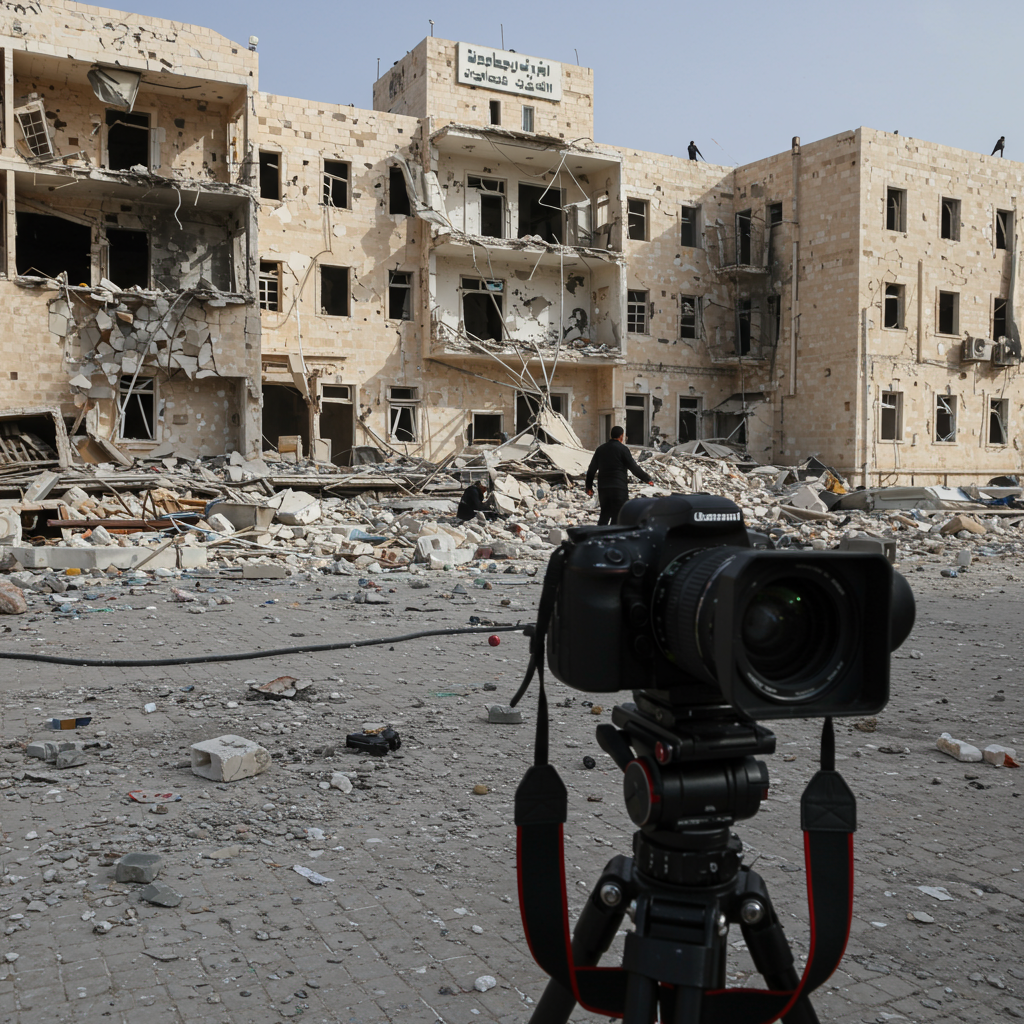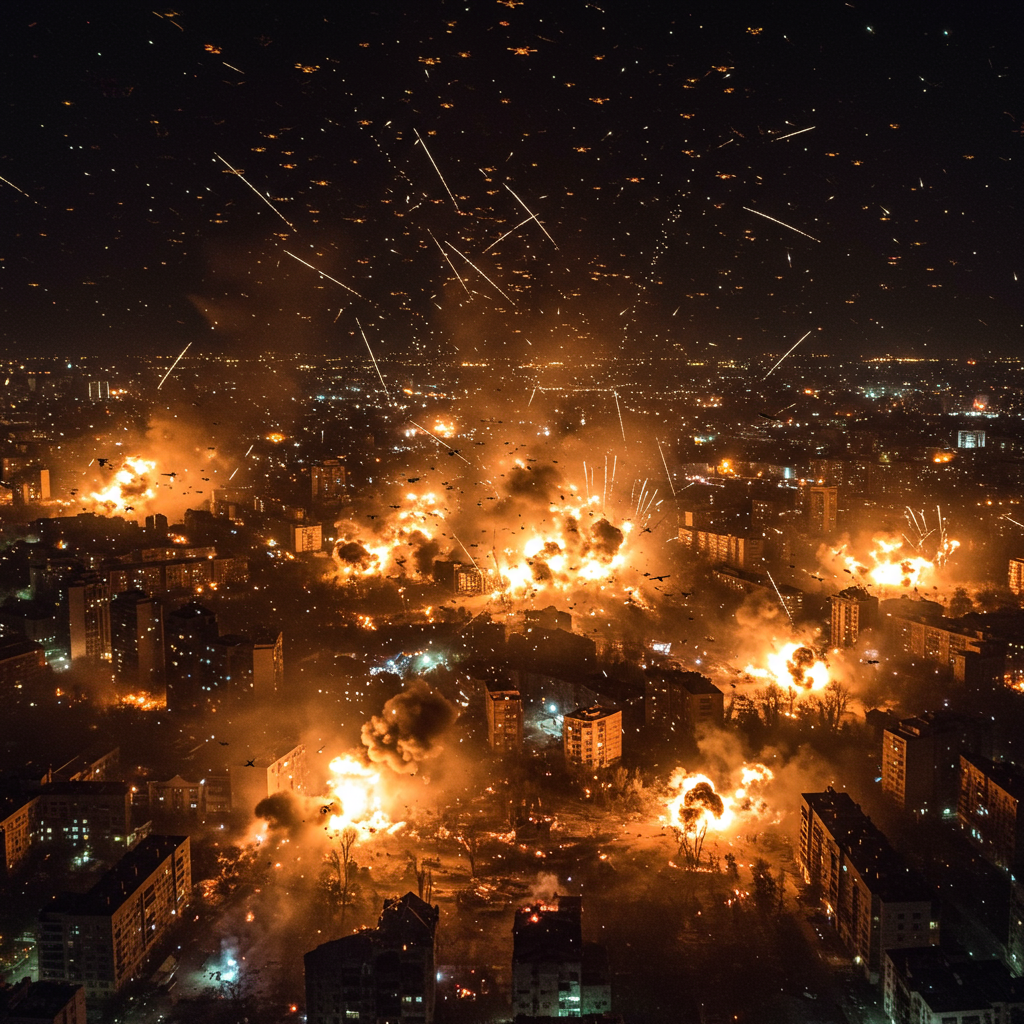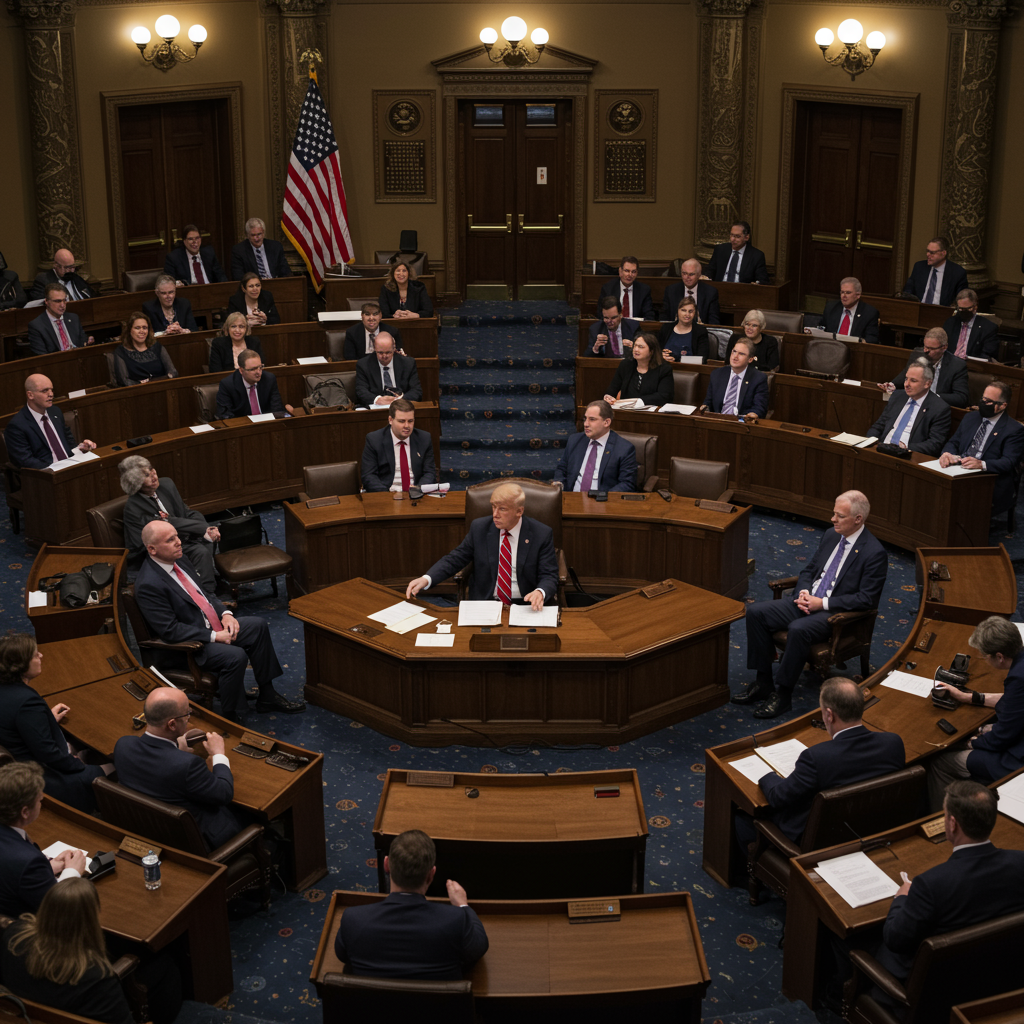An Israeli military inquiry has concluded that a deadly strike on Nasser Hospital in the southern Gaza Strip, which killed five journalists and at least 15 others, targeted what troops believed to be a Hamas camera position. This incident, occurring on August 25, 2025, sparked international outrage and calls for a thorough, transparent investigation, raising significant questions about civilian and media safety in conflict zones.
Tragic Strike on Nasser Hospital Claims Lives of Journalists
On Monday, August 25, 2025, a devastating Israeli military strike hit Nasser Hospital in Khan Younis, a frequently targeted area in the southern Gaza Strip. The assault resulted in the deaths of at least 20 people, including five journalists who were covering the ongoing conflict. Witnesses described a harrowing “double-tap strike” where an initial missile impacted a top floor. Minutes later, a second missile struck an external staircase, a location often used by journalists for their live broadcasts, as rescuers and media personnel gathered to assist the wounded. This second, unwarned strike proved fatal for many.
Among those tragically killed was Hussam al-Masri, a Palestinian cameraman contracted by Reuters, whose live video feed from the hospital abruptly ceased at the moment of the initial impact. Other journalists who lost their lives included Mariam Abu Dagga (freelancing for the Associated Press), Mohammed Salama (Al Jazeera), Moaz Abu Taha (freelance, occasional Reuters contributor), and Ahmed Abu Aziz (freelance, worked for Middle East Eye). Photographer Hatem Khaled, also a Reuters contractor, was wounded in the attack. The Foreign Press Association (FPA) voiced its profound shock, labeling it one of the deadliest Israeli attacks on international media personnel since the Gaza war began.
IDF’s Initial Inquiry: A Contested Narrative
The day after the strike, the Israeli military (IDF) released an initial inquiry. It claimed troops had identified a camera “positioned by Hamas” in the vicinity of Nasser Hospital. According to the IDF, this camera was being used to “observe the activity of IDF troops, in order to direct terrorist activities against them.” The military stated its forces “operated to remove the threat by striking and dismantling the camera.” The IDF further alleged that six of those killed were “terrorists,” with one reportedly involved in the October 7th infiltration into Israeli territory. However, the IDF did not provide direct evidence to substantiate its claim regarding the camera’s use by Hamas, nor did it identify the alleged terrorists. A security official clarified that none of the five journalists killed were among the six Hamas targets.
This explanation from the IDF presented a different tone from Prime Minister Benjamin Netanyahu’s earlier statement. Hours after the incident, Netanyahu had expressed deep regret for what he termed a “tragic mishap,” without any initial suggestion of a specific Hamas target at the hospital. His office had emphasized Israel’s respect for journalists, medical staff, and civilians, reiterating that the conflict was solely against Hamas terrorists. The discrepancy in these statements highlighted immediate questions surrounding the incident’s justification.
Gaps in the Investigation and Calls for Accountability
Recognizing “several gaps” in the preliminary findings, Israel’s Chief of the General Staff ordered a further, comprehensive probe. This inquiry is specifically tasked with examining:
Authorization Process: A detailed review of the strike’s authorization, including the type of ammunition approved and the timing of its approval.
Decision-Making in the Field: An in-depth look at how on-the-ground decisions were made leading to the strike.
The Chief of the General Staff reiterated the Israeli military’s policy of directing its operations exclusively toward military targets. However, the initial report did not offer a clear rationale for the “double-tap” nature of the attack, particularly the second strike that impacted as journalists and rescuers gathered. This omission fueled international condemnation and demands for greater clarity. The UN human rights office spokesperson, Thameen al-Kheetan, expressed shock, calling the attack “unacceptable” and raising “many, many questions about the targeting of journalists.” The UN demanded a thorough investigation and accountability, noting a historical lack of accountability from past Israeli investigations into Gaza deaths. UK Prime Minister Keir Starmer described the incident as “completely indefensible.”
Broader Context: Risks to Media and Humanitarian Crisis
This devastating incident adds to the grim statistics of media casualties in the protracted conflict. According to the Committee to Protect Journalists (CPJ), at least 197 journalists and media workers have been killed in Gaza, the Israeli-occupied West Bank, and Lebanon since the war began following the October 7, 2023, attack. The sheer number of fatalities underscores the perilous environment in which journalists operate, striving to deliver real-time news from one of the world’s most dangerous conflict zones.
The strike also coincides with intense international pressure on Israel regarding its military operations and the dire humanitarian situation in Gaza. The Hamas-run Health Ministry in Gaza reports over 60,000 people killed since the war began, though it does not differentiate between civilians and combatants. A UN-backed body, the Integrated Food Security Phase Classification (IPC), confirmed a famine in Gaza City, with over half a million people facing “catastrophic” conditions. While Israel has dismissed these reports, denying starvation in the territory, the conflict has displaced most of Gaza’s population multiple times, devastating infrastructure and healthcare systems.
Domestic Unrest and Ceasefire Negotiations
The Nasser Hospital strike unfolded amidst significant domestic unrest within Israel. Nationwide protests erupted, with demonstrators blocking highways and gathering in major cities like Tel Aviv and Jerusalem. Protesters demanded that their government accept a ceasefire deal to secure the release of remaining hostages held by Hamas and bring an end to the war. These calls for a ceasefire intensified even as Israeli leaders affirmed their commitment to ongoing offensive plans against Hamas.
The conflict originated with the Hamas-led attack on southern Israel on October 7, 2023, which resulted in approximately 1,200 deaths and 251 people taken hostage. As ceasefire negotiations continue, mediated by countries like Qatar, the international community watches closely, demanding accountability for civilian harm and protection for those documenting the conflict. The Nasser Hospital incident remains a stark reminder of the immense risks faced by journalists striving to report the truth from the front lines.
Frequently Asked Questions
What exactly led to the Israeli strike on Nasser Hospital that killed journalists?
The Israeli military’s initial inquiry claims its forces struck what they believed to be a Hamas camera positioned near Nasser Hospital. They stated the camera was used to observe IDF troops and direct “terrorist activities.” This strike, on August 25, 2025, tragically killed five journalists and at least 15 other people. Witnesses described a “double-tap strike,” with the second missile hitting an external staircase where journalists and rescuers had gathered. The IDF has not provided direct evidence for the camera’s use by Hamas, and its explanation contrasts with Prime Minister Netanyahu’s initial description of the event as a “tragic mishap.”
Who were the journalists killed in the Nasser Hospital incident, and what has been the international response?
Five journalists were killed: Hussam al-Masri (Reuters contractor), Mariam Abu Dagga (freelance for AP), Mohammed Salama (Al Jazeera), Moaz Abu Taha (freelance, Reuters contributor), and Ahmed Abu Aziz (freelance, Middle East Eye contributor). Photographer Hatem Khaled (Reuters contractor) was wounded. The incident triggered widespread international condemnation. The UN human rights office called the attack “unacceptable” and demanded a thorough investigation with accountability, citing a history of inadequate Israeli probes. The Foreign Press Association expressed outrage, highlighting the severe risks to media in Gaza.
What are the “gaps” identified in the Israeli military’s preliminary inquiry into the Nasser Hospital strike?
Following its initial inquiry, Israel’s Chief of the General Staff ordered a further probe to examine “several gaps” in the decision-making process that led to the strike. These gaps include a need for further examination into the authorization process prior to the strike, specifically the type and timing of ammunition approved. Additionally, the inquiry will scrutinize the “decision-making process in the field,” seeking to understand how choices were made by troops on the ground. These further investigations aim to provide greater clarity and address the international questions surrounding the incident.
Conclusion
The Israeli strike on Nasser Hospital that claimed the lives of five journalists on August 25, 2025, represents a critical moment in the ongoing Gaza conflict. While the IDF maintains its target was a Hamas camera position, significant questions persist regarding the sequence of events, particularly the “double-tap” nature of the strike, and the lack of concrete evidence for Hamas’s alleged use of the camera. The tragic deaths have intensified global calls for accountability and reinforced the urgent need for greater protection for journalists operating in war zones. As further investigations by the Israeli military unfold, the international community will be closely watching for transparency and justice, hoping to prevent such devastating incidents from recurring. The human cost of this conflict, including the heavy toll on those reporting it, continues to draw global scrutiny.




